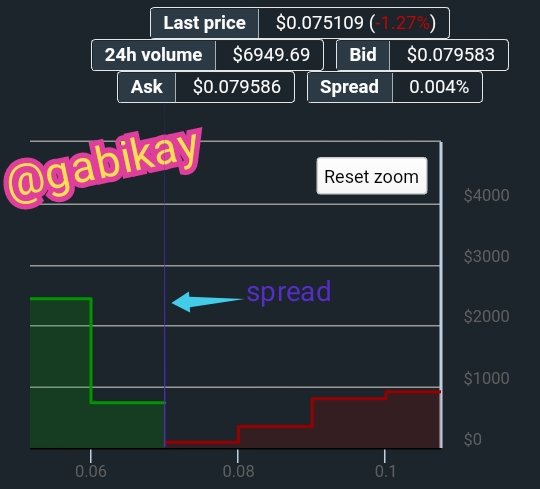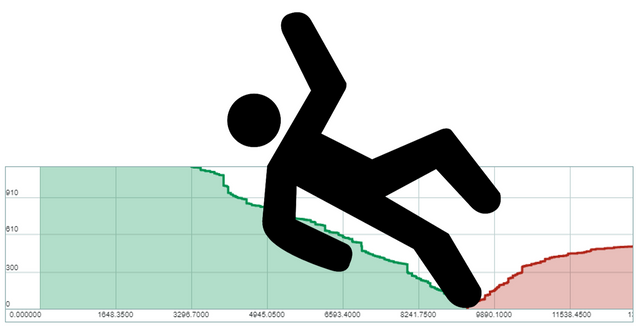Crypto Academy /Season 4 / Week 1 - Homework Post for Professor [@awesononso] || Bid- Ask Spread

1. Properly explain the Bid-Ask Spread.
Bid
The bid refers to the price of a commodity or Cryptocurrency at which a buyer is willing to buy. Usually, the buyer intends to but a commodity at the very lowest price he can get hence the bid price is always negotiated at a price level that is lower that the ask price. The bid is the demand of a particular commodity at anytime.
Ask
This refers to the price of a commodity or Cryptocurrency at which the holder or the owner wants to sell. The seller tends to always keep his price level higher than the bid price. The ask is the supply of a particular commodity at anytime.
Bid-Ask Spread
There is never a time when the bid and ask price will tally. This is because both the buyers and the sellers want their individual convinient prices to be what the market trades with. This difference in price that lies right inbetween the bid and ask price is what is referred to as the bid-ask spread.
The bid-ask spread could also be said to be the price value that makes the lowest ask price greater than the highest bid price. Without the spread, then the bid and the ask price are equal. If the spread must be eliminated, then either party in the trade must agree to the price of the opposite party.
In trade, we have the price takers and the Market makers
• The price taker is one that will buy an asset at the lowest price which the seller keeps it(ask price) and also sells his asset at the highest bid price which a buyer has set to buy.
• The market maker is one that will buy an asset at the bid price and also sells his asset at the ask price.
The difference between the two kinds of people above is that the price taker accepts what ever he sees in the market while the market maker sets out his own price and if his price level is not met, he doesn't trade.
Most times, patients is the quality that differentiates the both of them.
At the mid point of the spread is what is know as fair value. The fair value can be referred to as a price that is convinient to both the buyer and the seller. In the question 3 below, I will illustrate with the example.

2. Why is the Bid-Ask Spread important in a market?
• The bid-ask spread indicates the price level at which the buyers want to buy and the sellers want to sell their asset. If there is a tight or close spread, that I s to that that the spread value is very small or minuite, then it means that that particular asset has got much liquidity which will favour any trader that wants to take any position in the commodity as his buy or sell price level will be met in no distant time.
Also, if the spread is wide. That is to say that the spread value is big, then it just indicates that there are no much willing buyers or sellers of that commodity hence trade in the hat commodity will not be executed quick.
In essence, the spread helps in the determination of the market liquidity of a commodity or Cryptocurrency.
• Another great importance of the spread is that it alerts the trader of the difference between bid and ask. The spread lets a trader make the best decision during negotiation. With the knowledge of the fair value, the trader knows that he should never buy above the mid point of the spread and also never to sell (going from right to left) above the mid point of the spread.
This is done to maintain the advantage of the different parties in the market.

3. If Crypto X has a bid price of $5 and an ask price of $5.20,
a.) Calculate the Bid-Ask spread.
b.) Calculate the Bid-Ask spread in percentage.
Firstly, the spread can be mathematically represented as
ask price - bid price = spread
With this knowledge, then the spread for the market above is
a) $5.20 - $5 = $0.20
Also, the percentage of spread could be calculated mathematically to be;
(spread ÷ ask price) × 100 = %spread
So for the percentage of the spread above, we have it to be;
b) (0.20 ÷ 5.20) × 100 = 3.846%
The fair value of the commodity as stated earlier is the mid point of the spread. So the fair value is;
spread ÷ 2 = fair value
$0.20 ÷ 2 = $0.10
So with the knowledge of this fair value, if Crypto X is purchased at about $5.10, then this price is fair to both the buyer and the seller but if he buys at a price beyond $5.10, let us say $5,15, then he has over just bought in an over fair value which will in turn jeopardize the position bid position of others.
Same applies to the ask trade.

4. If Crypto Y has a bid price of $8.40 and an ask price of $8.80,
a.) Calculate the Bid-Ask spread.
b.) Calculate the Bid-Ask spread in percentage.
Having stated the formulas in question 3 above, we have that;
a) $8.40 - $8.80 = $0.40
b) (0.40 ÷ 8.80) × 100 = 4.545%

5. In one statement, which of the assets above has the higher liquidity and why?
As it can be seen that the spread of Cypto Y($0.40) is bigger and hence wider than the spread of Crypto X(0.20), then one can boldly say that the liquidity of Crypto X is greater than the liquidity of Crypto Y.

6. Explain Slippage.
Sometimes, when placing a trade usually using the marker order, you may find out that you end up having an open order instead of your order to be filled immediately given that you are buying at the ask price or selling at the bid price. Why such a delay? That delay is caused by a slippage.
Hence, a slippage can be said to be a deviation from the actual market price which a person intended to buy or sell. Let us say that you wanted to purchase TRX at a market price of $0.1359 and after making your buy order, then you find out that your order is still open. Why? Because the price of TRX just moved to $0.136 hence your order cannot be filled unless the market price comes down to your initial bid price or you cancel the order and take a new bid price.
This deviation in price from $0.1359 to 0.136 is what is known as slippage.

7. Explain Positive Slippage and Negative slippage with price illustrations for each.
Positive Slippage
A positive Slippage is a deviation in market price that favours or keeps the buyer or seller at advantage.
Let us say that a trader wanted to buy STEEM coin at a price of $0.926 using the market order. Then a slippage makes the highest bid price of STEEM to now become $0.920, then this is a positive Slippage because it has reduced the price of at which the trader would have bought the coin and so much he trader would have more of that coin with the same money.
On the ask traders part, if he wishes to sell his STEEM coin at a price of $0.926 using the market order and a slippage causes the price to increase to now become $0.93, then it is a positive Slippage for the trader because he will gain more money from the sales of the same quantity of coins.
Negative Slippage:
If there is a deviation in the market price that does not favor the trader or keeps the trader at a disadvantage, then it is said to be a negative slippage.
Let us assume that the market price of TRX is $0.15. If a trader wants to buy this TRX using the market order, and then his order gets filled at $0.153 , then this deviance in price is considered a negative slippage because in fact, the buyer has just made a loss.
On the part of the sell trader, if the market price of TRX is pegged at $0.15, and upon selling the market price sold at $0.13 then this can be considered as a negative slippage because the seller has incured a loss or is disadvantages by the sudden move in price.
Regards to professor @awesononso


Wooow I really love the remarks on your post keep it up